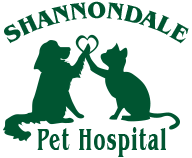Educational Articles
-
This handout summarizes the most common forms of lameness in growing dogs. Included are osteochondritis dissecans (OCD), panosteitis, hypertrophic osteodystrophy (HOD), elbow dysplasia, ununited anconeal process (UAP), fragmented coronoid process (FCP), patellar luxation, and hip dysplasia.
-
Botulism is a rare condition that causes paralysis in cats. Cats are exposed to botulism by eating raw meat or dead animals containing botulinum toxin produced by Clostridium botulinum.
-
Botulism is a rare condition that causes paralysis in dogs. Dogs are exposed to botulism by eating raw meat or dead animals containing botulinum toxin produced by Clostridium botulinum. Signs, diagnosis, and treatment are discussed.
-
Bowel incontinence is the loss of the ability to control bowel movements. There are two broad causes of fecal incontinence: reservoir incontinence and sphincter incontinence. In reservoir incontinence, intestinal disease interferes with the rectum's ability to store normal volumes of feces. In sphincter incontinence, a structural or neurologic lesion prevents the anal sphincter from closing normally. Clinical signs, diagnostic testing, and treatment vary based on the underlying cause.
-
Bowel incontinence is the loss of the ability to control bowel movements. There are two broad causes of fecal incontinence: reservoir incontinence and sphincter incontinence. In reservoir incontinence, intestinal disease interferes with the rectum's ability to store normal volumes of feces. In sphincter incontinence, a structural or neurologic lesion prevents the anal sphincter from closing normally. Clinical signs, diagnostic testing, and treatment vary based on the underlying cause.
-
Brachycephalic airway syndrome refers to a particular set of upper airway abnormalities that affect brachycephalic cats. The most common sign of the condition is mouth breathing and, in the long term, the increased effort associated with breathing can put a strain on the cat's heart. Surgery is the treatment of choice whenever the anatomical abnormalities interfere with a cat’s breathing.
-
Brachycephalic airway syndrome refers to a particular set of upper airway abnormalities that affect brachycephalic dogs. The most common sign of the condition is mouth breathing and, in the long term, the increased effort associated with breathing can put a strain on the dog’s heart. Surgery is the treatment of choice whenever the anatomical abnormalities interfere with a dog’s breathing.
-
Brain injuries are devastating and, unfortunately, often fatal. The typical signs of brain injury in a cat include altered consciousness that may signal bleeding in the skull, decreased blood flow to the brain, or fluid causing swelling within the brain itself. There are many potential causes of brain injury and treatment will always be determined by the underlying problem that led to the injury.
-
Brain injuries are devastating and, unfortunately, often fatal. The typical signs of brain injury in a dog include altered consciousness that may signal bleeding in the skull, decreased blood flow to the brain, or fluid causing swelling within the brain itself. There are many potential causes of brain injury and treatment will always be determined by the underlying problem that led to the injury.
-
Brain tumors are generally classified as either primary or secondary. Several studies suggest that the prognosis for a dog with a primary brain tumor may be significantly improved by surgical removal of the tumor, radiation therapy, and/or chemotherapy.


